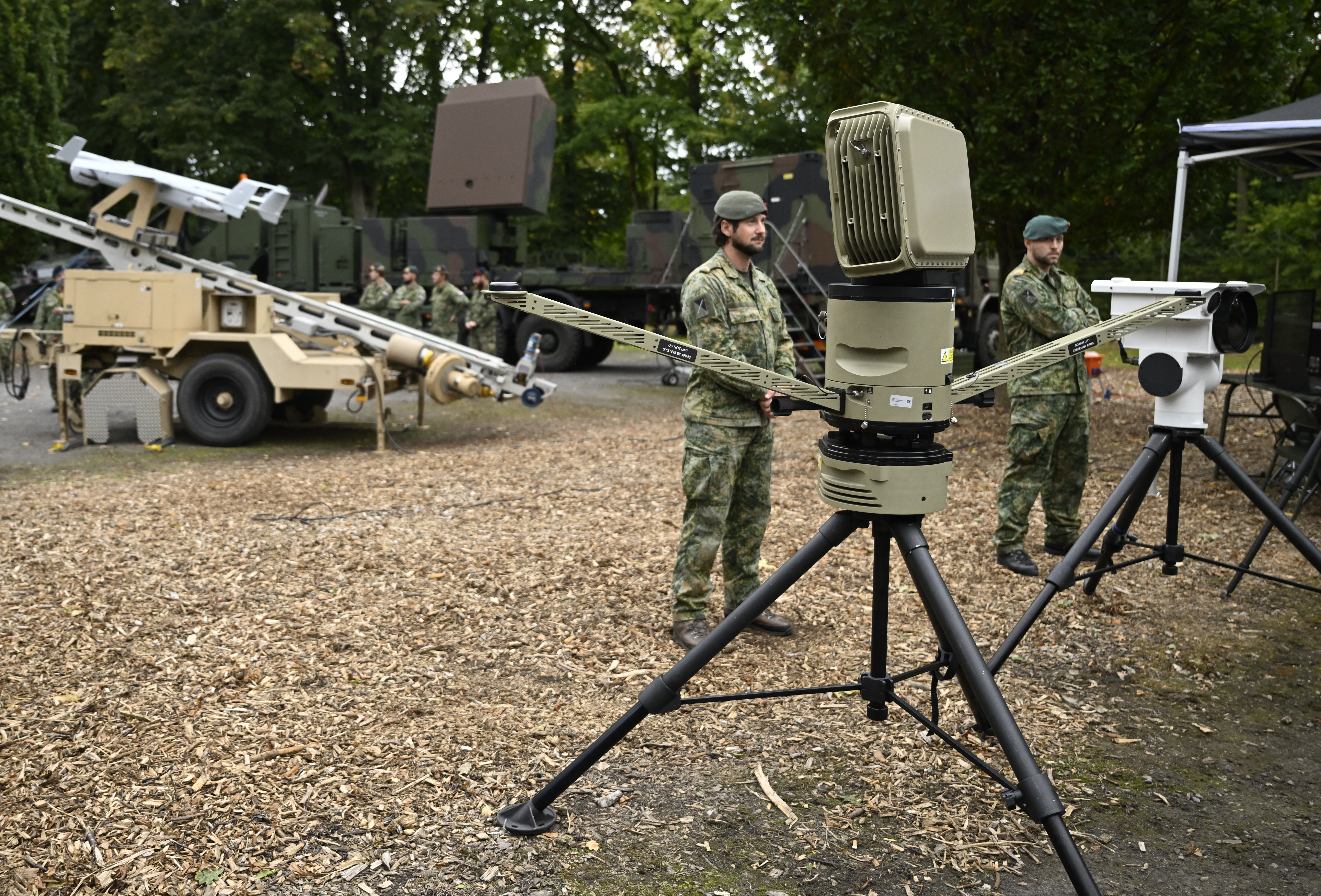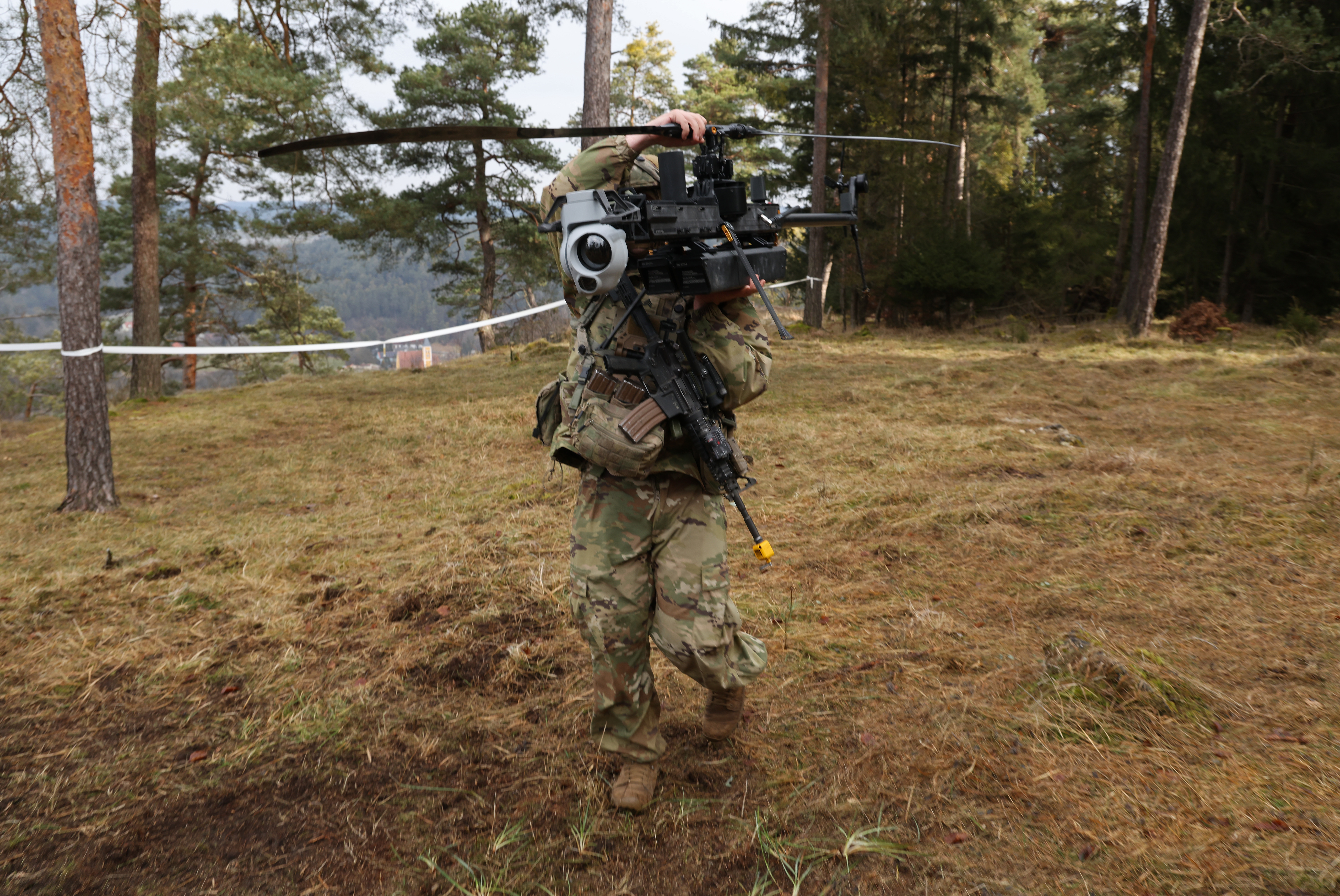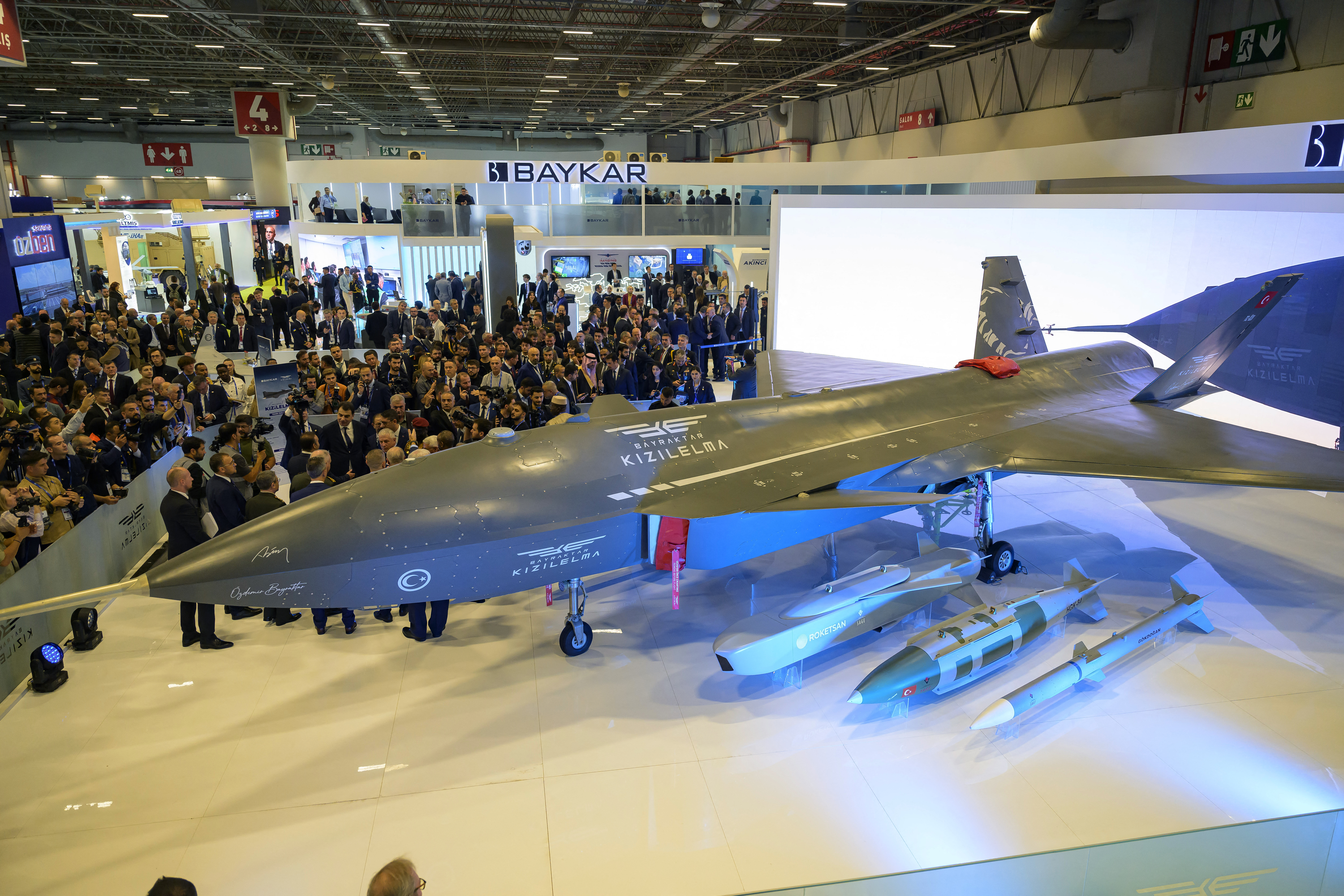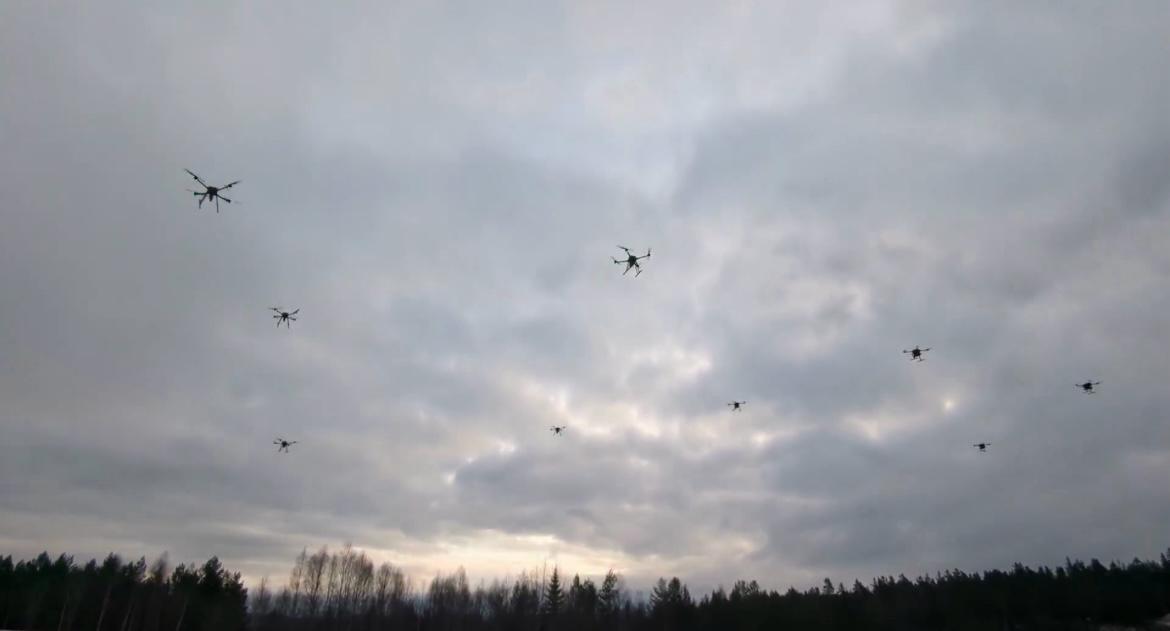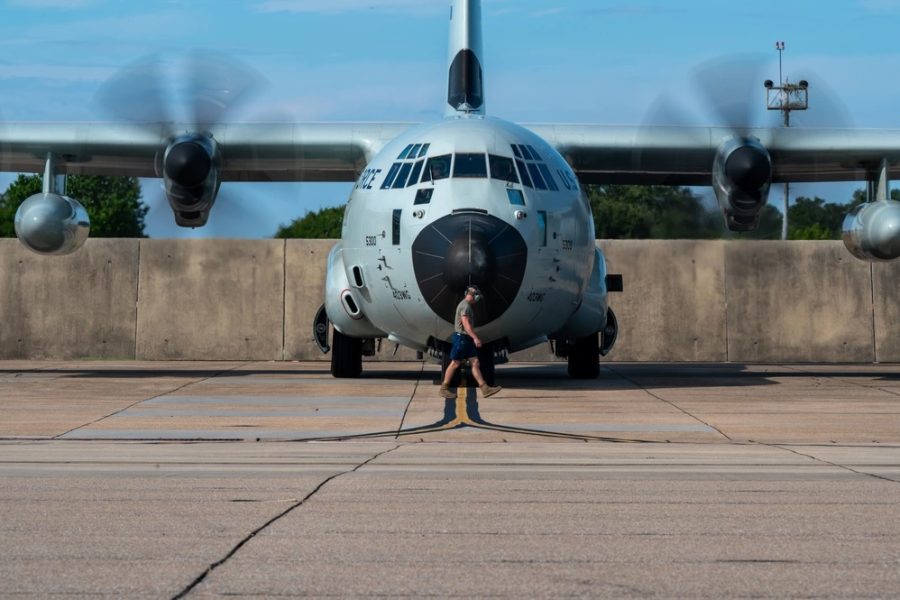
Air Force Hurricane Hunters spend much of their time flying through storms in near-zero visibility, frequently at night and in heavy turbulence. But they also get to see up close and personal something few humans ever do—the eye of a hurricane.
Airmen with the 53rd Weather Reconnaissance Squadron captured the experience of emerging into the eye in a video taken this week during one of their flights through Hurricane Erin, the Category 2 storm that brushed up against the East Coast this week. Published Aug. 16, the video shows a phenomenon called the stadium effect, where the wall of the eye curves upward like the bowl of a sports stadium.
The video is an audio journey as well, emerging from the loud static of the storm into the clear of the eye, where viewers can hear the WC-130J’s four turboprop engines and its voice warning system saying “autopilot” and “check altitude” before diving back into the storm.
A Reserve unit stationed at Keesler Air Force Base, Miss., the Hurricane Hunters fly into storms to collect atmospheric data that help scientists at the National Hurricane Center predict the size of the storms and where they will make landfall, which in turn helps decision-makers make calls such as evacuation orders.
The squadron says it increases weather model accuracy and hurricane track forecasts by 20 percent. That saves lives and money; it costs at least $1 million to evacuate a single mile of coastline, so it helps when planners have a better sense of where to focus safety efforts.
The Hurricane Hunters flew several sorties tracking Erin out of St. Croix, one of the U.S. Virgin Islands and a frequent hub for the unit during hurricane season. And while the squadron has flown weather reconnaissance missions since 1944, the Erin sorties saw them working on a new project backed by top science institutions to improve forecasts.
Historically, scientists have studied atmosphere, wave, and ocean behavior as three separate problems, but that contributes to an incomplete understanding of how momentum, heat, and moisture between the ocean and atmosphere shapes tropical cyclones, the University of Notre Dame’s Richter Lab explained.
The Richter Lab and other organizations, including the Office of Naval Research and Woods Hole Oceanographic Institution, want to better understand storms by focusing on the intersection of those phenomena. Called the Study on Air-Sea Coupling with Waves, Turbulence, and Clouds at High Winds (SASCWATCH), the project involves deploying a grid of ocean sensors ahead of hurricanes, Woods Hole said on its website.
That’s where the 53rd WRS comes in: dropping special floats off of its cargo ramp that measure wave direction, water temperature, salinity, and other phenomena. It’s not unlike the Hurricane Hunters’ usual mission, which is to release dropsondes—small cylinders that relay atmospheric data back to the aircraft as they descend through the storm on a parachute. Except the dropsondes are shot out through a tube in the aircraft’s belly, whereas the floats are flung out the back of the open cargo ramp.
As of the afternoon of Aug. 21, Hurricane Erin was moving deeper into the Atlantic, away from the East Coast, though some communities still braced for high winds, waves, and floods. The storm’s impact on Air Force installations appears to be minimal; both Joint Base Langley-Eustis, Va., and Joint Base Charleston, S.C., noted that they were tracking the hurricane but did not expect serious issues.
But even as Erin fades away, the hurricane season isn’t over for the 53rd WRS, which in recent years has been stretched thin covering increasingly busy Atlantic hurricane seasons in the summer, then pivoting to the Pacific in the winter to track atmospheric rivers—massive bodies of vapor that dump snow and rain on the West Coast.
The squadron has just 10 aging WC-130Js, a portion of which are down for maintenance at any given time.
“The resources we’re working with today were established and set in 1996 and no significant changes have happened since then,” squadron member Maj. Chris Dyke said in 2024. “At that point it was resourced for a six-month hurricane mission. We are now a 10-month operational mission and a two-month road show. … To be honest, it’s not enough time for the aircraft.”
The same goes for the people operating the aircraft, with the nonstop demand “taking a toll” Dyke said. A Government Accountability Office report published in March agreed that the 53rd WRS and their fellow hurricane hunters in the National Oceanic and Atmospheric Administration are strapped for staff and aircraft, but the government watchdog called for more data and better interagency communication to refine a plan going forward.
The post VIDEO: Hurricane Hunters Fly into Erin’s Eye, Deploy New Weather Research Tech appeared first on Air & Space Forces Magazine.

Air, 53rd Weather Reconnaissance Squadron, Air Force Reserve, Hurricane Erin, Hurricane Hunters, weather
Air & Space Forces Magazine
[crypto-donation-box type=”tabular” show-coin=”all”]

